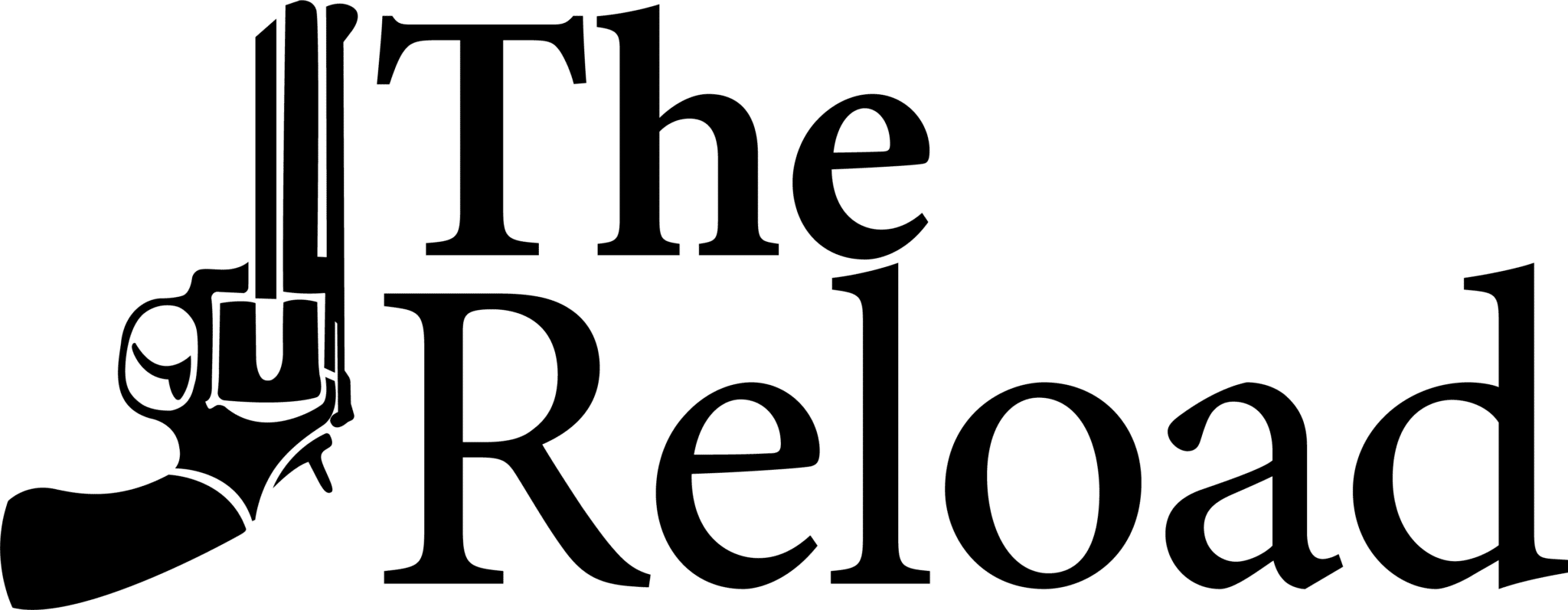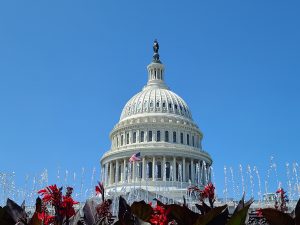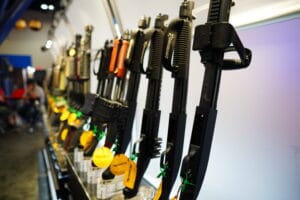We have significant news to start off the Sunday newsletter this week.
On Friday, President Trump made his first move on gun policy. He issued an executive order directing Attorney General Pam Bondi to review a bunch of federal gun policies, especially rules enacted under the Biden Administration. But he leaves it up to her to decide what does and doesn’t need to be done.
I’m scheduled to be on CNN around 7:15 am Eastern today to discuss the order. So, tune in.
Meanwhile, Contributing Writer Jake Fogleman dissects a new Fifth Circuit ruling on the National Firearms Act’s silencer restrictions. What does it mean for the deregulation fight? And I take a look at the clear signs of where the Democrats are headed on guns post-2024.
Plus, David Blanton of The Humble Marksman joins the podcast to run down the trends at SHOT Show 2025.
Oh, also, let me know if you’re gonna be in Center City Philadelphia for the Super Bowl tonight. I’ll be watching the Eagles somewhere up there near Broad Street. Then, hopefully, I’ll be partying in front of City Hall after the game. Go Birds!
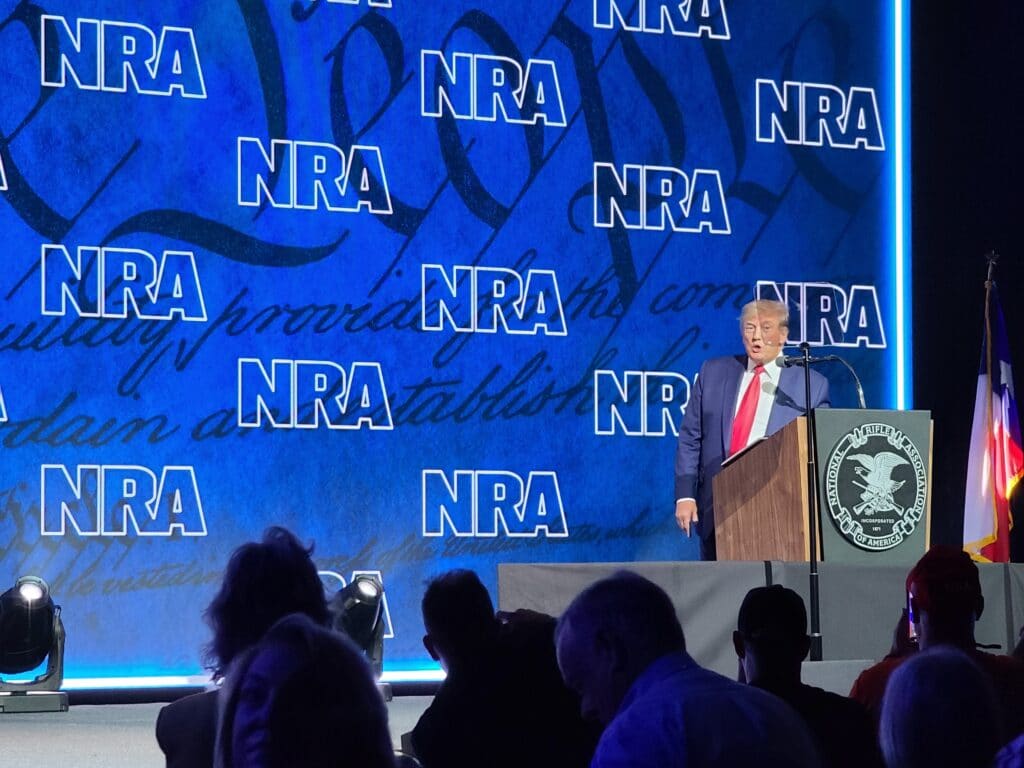
Trump Orders Review of Federal Gun Policy
By Stephen Gutowski
President Donald Trump has directed his administration to look for and potentially undo federal regulations that may violate the Second Amendment.
On Friday, Trump issued a new executive order requiring newly confirmed Attorney General Pam Bondi to dig through agency rules and policies, looking for any that might improperly restrict gun rights. He put a particular emphasis on agency rules implementing new gun restrictions during the Biden Administration, such as those added by the ATF. He gave Bondi a month to complete the review and left it to her to figure out the details of which policies to roll back and how to do so.
“Within 30 days of the date of this order, the Attorney General shall examine all orders, regulations, guidance, plans, international agreements, and other actions of executive departments and agencies (agencies) to assess any ongoing infringements of the Second Amendment rights of our citizens, and present a proposed plan of action to the President, through the Domestic Policy Advisor, to protect the Second Amendment rights of all Americans,” the order said.
The order is the first direct action Trump has taken on gun policy since coming back into office. It could fulfill his campaign promise to undo much of Former President Biden’s gun actions–though not on the timeline he initially said. However, the order leaves it to AG Bondi to put meat on the bone. That may concern some gun-rights advocates who’ve been skeptical of her appointment given her background of supporting stricter gun regulations, such as “Red Flag” laws and age restrictions on gun sales.
“Upon submission of the proposed plan of action described in section 2 of this order, the Attorney General shall work with the Domestic Policy Advisor to finalize the plan of action and establish a process for implementation,” the order said.
However, gun-rights groups were broadly positive in their initial reaction to the order.
“Promises made to law-abiding gun owners are being kept by President Donald J. Trump,” Doug Hamlin, NRA Executive Vice President, said in a statement.
“Gun owners fought hard to elect a president who would take a sledgehammer to Biden’s unconstitutional gun control policies, and today, President Trump proved he’s serious about that fight,” Aidan Johnston, Gun Owners of America’s Director of Federal Affairs, said despite the group’s opposition to Bondi’s confirmation.
Gun-control groups had the opposite, though more muted, reaction.
“Didn’t Trump just promise the president of Mexico that he would clamp down on gun trafficking?” Brady PAC posted, referencing Trump’s deal to forestall a trade war earlier this month. “Tonight, he issued an order that would probably do the exact opposite and put more lives at risk.”
“Donald Trump waited until Friday night to issue an Executive Order rolling back lifesaving gun measures because he knows it will be incredibly unpopular,” Giffords posted.
Trump specifically directed Bondi to look into some of the top complaints gun-rights activists and industry members have had over the past four years. She is supposed to review “all Presidential and agencies’ actions from January 2021 through January 2025 that purport to promote safety but may have impinged on the Second Amendment rights of law-abiding citizens.” That includes “Rules promulgated by the Department of Justice, including by the Bureau of Alcohol, Tobacco, Firearms, and Explosives.”
Among the most prominent ATF rules from the Biden Administration are ones that effectively ban the sale of unfinished firearm parts and pistol-braced guns, as well as one that curtails the ability of those without dealer licenses to sell used guns. The federal courts have blocked implementation of most of those rules in the years since the Biden Administration finalized them. However, the Supreme Court is currently considering the legality of the unfinished parts rule and appeared to lean toward upholding it during oral arguments last fall.
The order also directs Bondi to reconsider the ATF’s “zero tolerance” policy for regulating licensed gun dealers. The Biden Administration implemented that rule, but it has remained in effect during the early days of the Trump Administration–much to the chagrin of the gun industry.
It then orders a review of reports and documents from the Biden-created White House Office of Gun Violence Prevention, the government’s position in gun-rights litigation, how agencies have classified different firearms and ammunition, as well as application processing for making, transferring, or exporting firearms.
In all, the list of areas to review includes nearly every high-level priority for the gun-rights movement and gun industry. However, the order doesn’t necessarily require the AG to do anything in particular; it leaves the plan for action up to her and Domestic Policy Advisor Vince Haley.
Trump said in the order the review is necessary to protect Americans’ Second Amendment rights.
“The Second Amendment is an indispensable safeguard of security and liberty,” the order said. “It has preserved the right of the American people to protect ourselves, our families, and our freedoms since the founding of our great Nation. Because it is foundational to maintaining all other rights held by Americans, the right to keep and bear arms must not be infringed.”
UPDATE 2-7-2025 6:35 PM EASTERN: This piece has been updated with further details about Trump’s executive order.
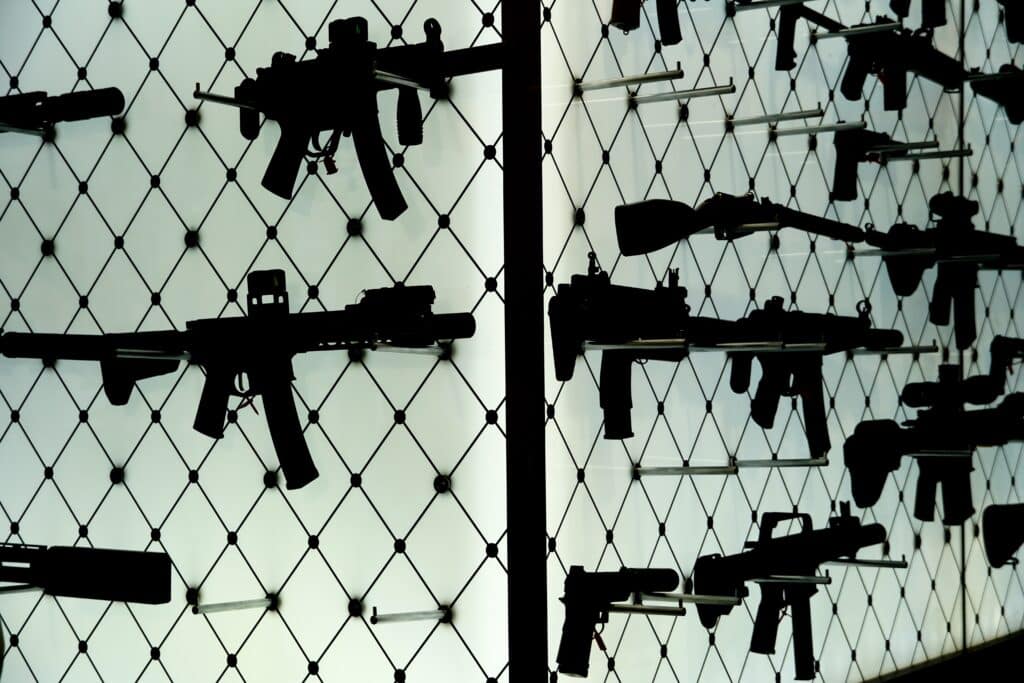
Analysis: Fifth Circuit Ruling Highlights Why Courts Aren’t the Best Bet for Silence Reform [Member Exclusive]
By Jake Fogleman
The Fifth Circuit Court of Appeals just decided whether the Second Amendment protects silencers. It didn’t go the way gun-rights advocates hoped.
On Thursday, a three-judge panel upheld the conviction of a Louisiana Federal Firearms Licensee (FFL) for possessing an unregistered silencer, more accurately called a sound suppressor, in violation of the National Firearms Act (NFA). The panel determined suppressors do not count as “arms” under the Second Amendment.
“The use of a suppressor, as we noted above, is not necessary to the use of a firearm, so it is not protected by the plain text of the Second Amendment,” Chief Judge Jennifer Walker Elrod wrote in US v. Peterson. “The Second Amendment, therefore, is not offended by the NFA regulation, so we AFFIRM the district court’s denial of Peterson’s motion to dismiss.”
While Thursday’s ruling did not arise from a formal challenge by gun-rights activists, it nonetheless spells bad news for some of their policy goals. One of the longtime priorities for many in the gun-rights movement has been chipping away pieces of the NFA–the most onerous of the federal gun statutes–with the eventual goal of totally dismantling it. Suppressor deregulation has been at the forefront of those efforts for decades.
The federal government enacted the NFA and its restrictions on items like suppressors, short-barreled rifles, and machineguns more than 140 years after the Second Amendment was ratified. Some gun-rights advocates believe that a faithful application of the Supreme Court’s Bruen standard—which requires analogizing to Founding-era approaches to weapons regulation in order to support current gun laws—could eventually gut suppressor regulations and bring down the NFA altogether. However, the Peterson panel’s analysis never reached the point of performing Bruen‘s required historical analysis.
Instead, they stopped a step short of that. Using the definition considered by the Supreme Court in Heller, the panel set a baseline that “‘arms’ in the Second Amendment sense comprises ‘weapons of offence,’ ‘armour of defence,’ and ‘anything that a man wears for his defence, . . . takes into his hands, or useth in wrath to cast at or strike another.'”
While the defendant argued suppressors are “an integral part of a firearm” and thus should be given the same Second Amendment consideration as other weapons, the panel disagreed.
“A suppressor, by itself, is not a weapon,” Walker wrote. “Without being attached to a firearm, it would not be of much use for self-defense. And unless a suppressor itself is thrown (which, of course, is not how firearms work), it cannot do any casting or striking.”
Instead, she classified suppressors as firearm accessories, which she distinguished from “accoutrements” like gunpowder, lead, and cartridges considered protected by other courts. She argued those items are necessary for a firearm to function, whereas accessories like suppressors are merely compatible with firearm usage.
“While possession of firearms themselves is covered by the plain text of the Second Amendment, possession of firearm accessories is not,” she concluded.
The case highlights the difficulty gun-rights advocates will have in trying to undermine the NFA through judicial means. Even with a historically focused Second Amendment test, in a typically friendly circuit, they were stonewalled. And the odds the Supreme Court might step in to rule otherwise, even if they might disagree with the premise that accessories are unprotected, don’t look good.
The Court has already proven extremely hesitant to accept cases involving bans on far more common items like semi-automatic rifles and ammunition magazines. Furthermore, even if it did take the issue up, there’s no guarantee that the Court, as currently constituted, would rule the way gun-rights advocates want–no matter how incongruent with the Bruen standard advocates may think such an outcome would be.
In both the oral arguments and delivered opinion in the case over the ATF’s bump stock ban, multiple members of the Court’s conservative majority indicated they’d approve of bump stocks being banned by Congress. None even mentioned how they thought such a ban might fit with the Court’s own text, history, and tradition test. Bump stocks, like suppressors, could be construed as accessories and similarly sit outside the Overton window of what is considered a protected “arm” by the Court.
The most recent Second Amendment case the Court did take, US v. Rahimi, also showed that the justices may be willing to bend Bruen to avoid untenable public relations outcomes in controversial cases.
The Court’s Second Amendment jurisprudence has also tended to lag behind public opinion. Its few landmark decisions recognizing broader gun rights protections have all borne that out. While suppressors are becoming more mainstream and more widely owned, their acceptance by the broader public still falls far short of where handguns and concealed carry were at by the time the Supreme Court acted on those issues.
That’s not to say that courts may never be an avenue for success. There have certainly been sporadic Second Amendment victories in the lower courts against other controversial items regulated by the NFA. In the last year, for instance, at least two district court judges have struck down the general federal prohibition on machine guns as applied to particular criminal defendants. It’s also possible that other circuit court judges might see things differently in an en banc setting.
Indeed, at least one Fifth Circuit judge who was not on the Peterson panel previously dropped a few breadcrumbs to that effect in an earlier concurrence dealing with the ATF’s pistol-brace rule. In it, Judge Don Willett mused on the possibility that braces and other firearm accessories or attachments should be afforded constitutional protection on par with firearms themselves.
“In my view, protected Second Amendment’ conduct’ likely includes making common, safety-improving modifications to otherwise lawfully bearable arms,” Willett wrote in Mock v. Garland.
He also questioned the historical justification for certain aspects of the NFA as a whole.
“ATF has not identified any historical tradition of requiring ordinary citizens to endure a lengthy, costly, and discretionary approval process just to use accessories that make an otherwise lawful weapon safer,” he wrote.
But the fact remains that a panel of all Republican-appointed jurists in the most conservative and most pro-Second Amendment circuit court in the country concluded that suppressors, which are literally deemed firearms under federal law, do not count as “arms” protected by the Second Amendment.
That all indicates gun-rights advocates with ambitions of deregulating suppressors or abolishing the NFA may be forced to refocus their efforts outside the courtroom.
Podcast: Gun Industry Trends at SHOT Show 2025 (Ft. The Humble Marksman) [Member Early Access]
By Stephen Gutowski
The gun industry just finished up its trade show in Las Vegas, Nevada.
Even though I was in the Philippines with my fiance during the show this year, I wanted to make sure we all stayed updated on the big storylines of SHOT Show 2025. So, I invited one of the best gun reviewers out there to come on the show and give us his view from the floor. David Blanton is a competitive shooter turned gun reviewer who runs The Humble Marksman YouTube channel.
He’s been one of my favorite reviewers for a while now, and he was able to peruse the industry’s latest offerings at SHOT. He gives insight into the major trends at this year’s show, including integrated compensators and big company collaborations. He also shares the guns he handled that intrigued him the most.
Then Blanton explained why he thinks longtime industry standard-bearer Glock is in danger of being left behind. We also discussed the troubling trend of companies releasing guns that aren’t fully baked.
I also talk to one of the folks that make this show possible in a Members’ segment!
You can listen to the show on your favorite podcasting app or by clicking here. Video of the episode is available on our YouTube channel. An auto-generated transcript is here. Reload Members get access on Sunday, as always. Everyone else can listen on Monday.
Get a 30-day free trial for a subscription to The Dispatch by clicking here.
Plus, Contributing Writer Jake Fogleman and I discuss David Hogg’s election for a Democratic Party leadership position and what it says about the party’s approach to gun politics. We also talk about Trump’s attorney general nominee Pam Bondi getting confirmed despite concerns raised by gun rights groups and unpack one of her first actions with regard to the ATF. Finally, we break down a recent ruling from a district judge who struck down the federal machine gun ban for violating the Second Amendment.
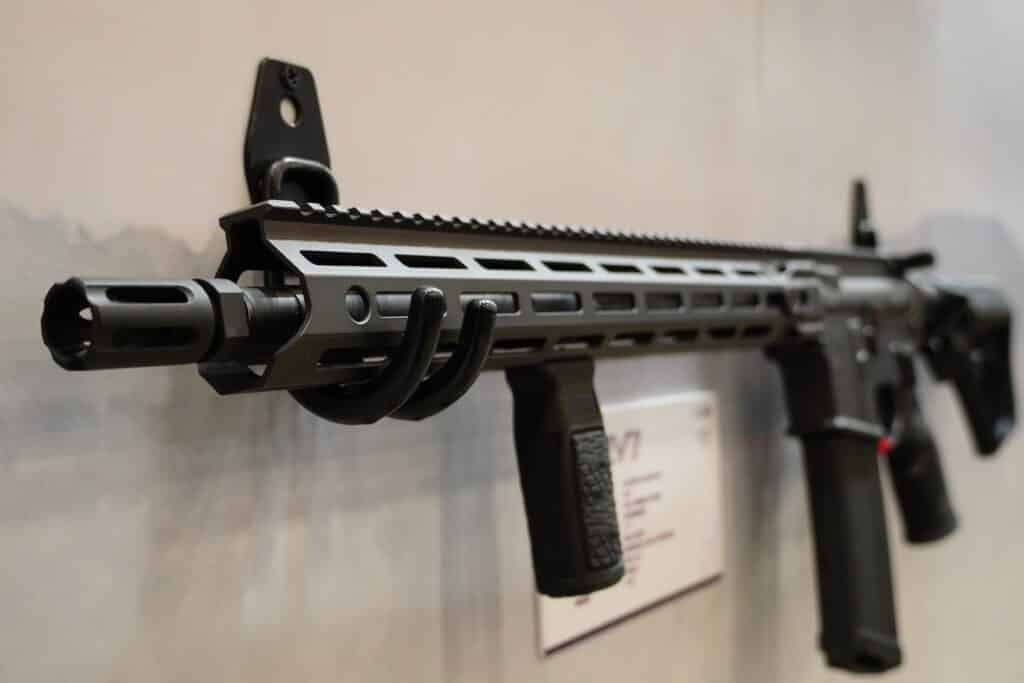
Analysis: Democrats Signal No Shift on Guns [Member Exclusive]
By Stephen Gutowski
While a significant number of Democrats have shifted positions on some issues in the wake of their 2024 loss, the same can’t be said about guns.
On Saturday, the Democratic National Convention (DNC) elevated a prominent gun-control activist to its leadership. David Hogg won one of the vice chair spots at the national organization. He first gained notoriety after helping organize March for Our Lives in the wake of a shooting at his high school in Parkland, Florida. Since then, he’s become one of the most aggressive gun-control activists in the country–backing gun bans and advocating for the expulsion of those in his party who disagree.
Meanwhile, few in the party have backed the pro-gun bills beginning to make their way into Congress. Between the House and Senate versions of five major pro-gun bills, there is exactly one that’s garnered any Democratic support at all thus far. That bill, the House’s version of the Constitutional Concealed Carry Reciprocity Act, has precisely one Democratic co-sponsor.
The Senate version doesn’t have any Democratic support. Neither do any of the bills trying to deregulate silencers/suppressors, bar banks that discriminate against gun companies from federal contracts, or ensure the continued legality of lead ammunition.
Now, it’s still early. Those bills could eventually gain Democratic support or be folded into omnibus bills that earn bipartisan backing. But that’s a pretty stark contrast to what we’ve seen on other issues, like immigration.
Last month, a substantial number of Democrats crossed the aisle to support the Laken Riley Act. That bill allowed illegal immigrants to be deported after arrests for lower-level crimes, such as theft, and failed to clear the last Congress. This time around, 46 House Democrats and 12 of their Senate colleagues voted for it.
Hogg’s appointment and the lack of Democratic support for pro-gun bills are early evidence the party isn’t convinced their gun positions cost them in the 2024 election. In fact, they may see them as a way forward.
After all, while Hogg is just one of three vice chairs, he is the youngest to ever attain the role. Plus, he’s almost entirely known for his aggressive gun-control advocacy. And he’s not exactly subtle about it.
“Fuck the politicians that divide us with hate and sell guns as the solution,” Hogg tweeted in June 2021. “Fuck the lobbyists that are directly responsible for the murder of my classmates and admins. Fuck the system of loopholes that enabled the NRA to kill millions while making billions for gun companies.”
“Has it ever occurred to you I don’t give fuck if you think banning guns is a bad idea?” he tweeted in January 2022. “The best way to stop a bad guy with a gun isn’t a good guy with a gun- it’s stopping a bad guy like the shooter at my high school from being able to obtain a gun.”
“Fuck the NRA and especially fuck the politicians who say they support gun laws but never do anything after getting elected,” he posted a month later. “Blood is on both your hands.”
Putting Hogg in leadership sends an unmistakable signal about where the party is headed post-2024. On guns, that’s essentially in the same direction it has been over the last 10 to 15 years. While the Harris Campaign tried to relate to gun owners on a surface level by discussing their candidates’ gun ownership, it stuck to aggressive gun-control policy positions–including backing an “assault weapons” ban.
If Hogg’s ascension is any indication, Democrats’ policy positions are unlikely to change. If anything, their attempt to relate to gun owners, even on a surface level, may be the only change.
That’s it for now.
I’ll talk to you all again soon.
Go Birds,
Stephen Gutowski
Founder
The Reload
